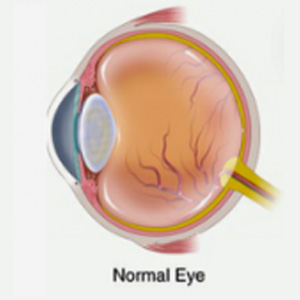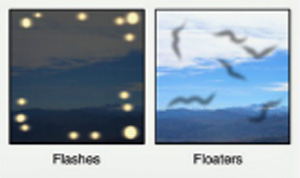Flashes and Floaters
Understanding Floaters
Floaters are small, dark spots or strands that appear to float in your vision. These are common and usually harmless, often caused by the natural shrinking of the eye’s vitreous gel with age.
Recognizing Flashes
Flashes of light are less common and result from the movement of the gel inside the eye. In rare cases, frequent flashes or an increase in floaters may indicate retinal detachment, a serious condition requiring immediate treatment.
When to Seek Help
Urgent medical attention is necessary if you experience:
- A sudden increase in floaters, especially with flashing lights
- A new, large floater
- Changes in floaters or flashes after an eye injury
- A shadow spreading across your vision
Causes and Risks
Floaters often develop as the vitreous gel in the eye shrinks with age, forming semi-transparent or dark shapes. They are more noticeable when looking at light-colored surfaces. Though generally harmless, they can sometimes indicate other eye issues.
People who are short-sighted, have had eye surgery, or experienced eye injuries are at higher risk for floaters. Retinal detachment, indicated by a sudden increase in floaters and flashes, requires immediate medical intervention.
About Flashes
Flashes are caused by the vitreous gel pulling on the retina, often seen as small sparkles or lightning. While common and usually harmless, continuous flashes might signal retinal detachment, needing urgent medical care.
Risk Factors for Retinal Detachment
Increased risk of retinal detachment is associated with:
- Past eye surgeries
- Severe short-sightedness
- Previous eye injuries
- Family history of retinal detachment
- Age over 50
- Certain retinal or systemic diseases
For personalized advice and regular eye health checks, visit your optometrist. They are specialists in eye health and can provide essential examinations and care.



